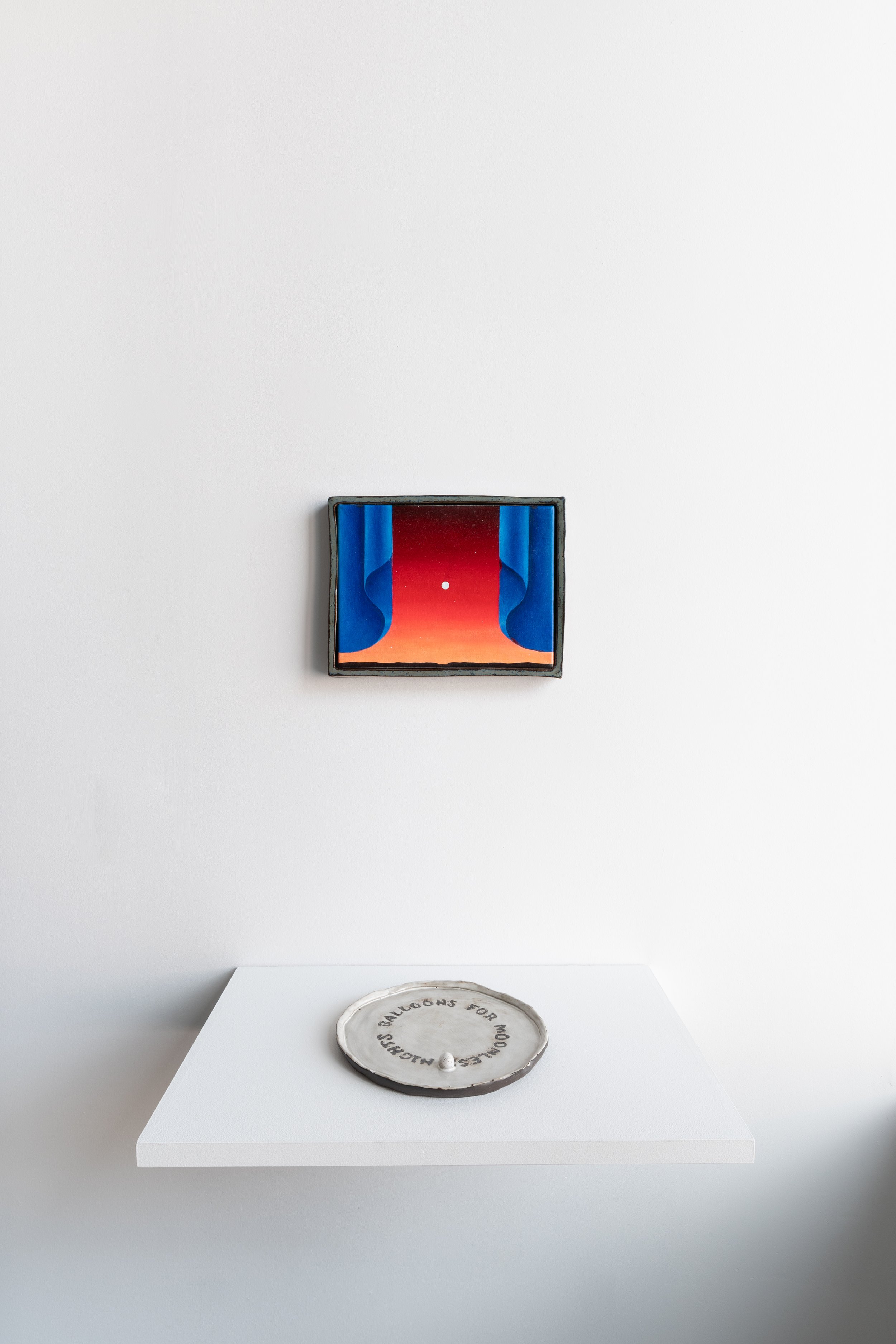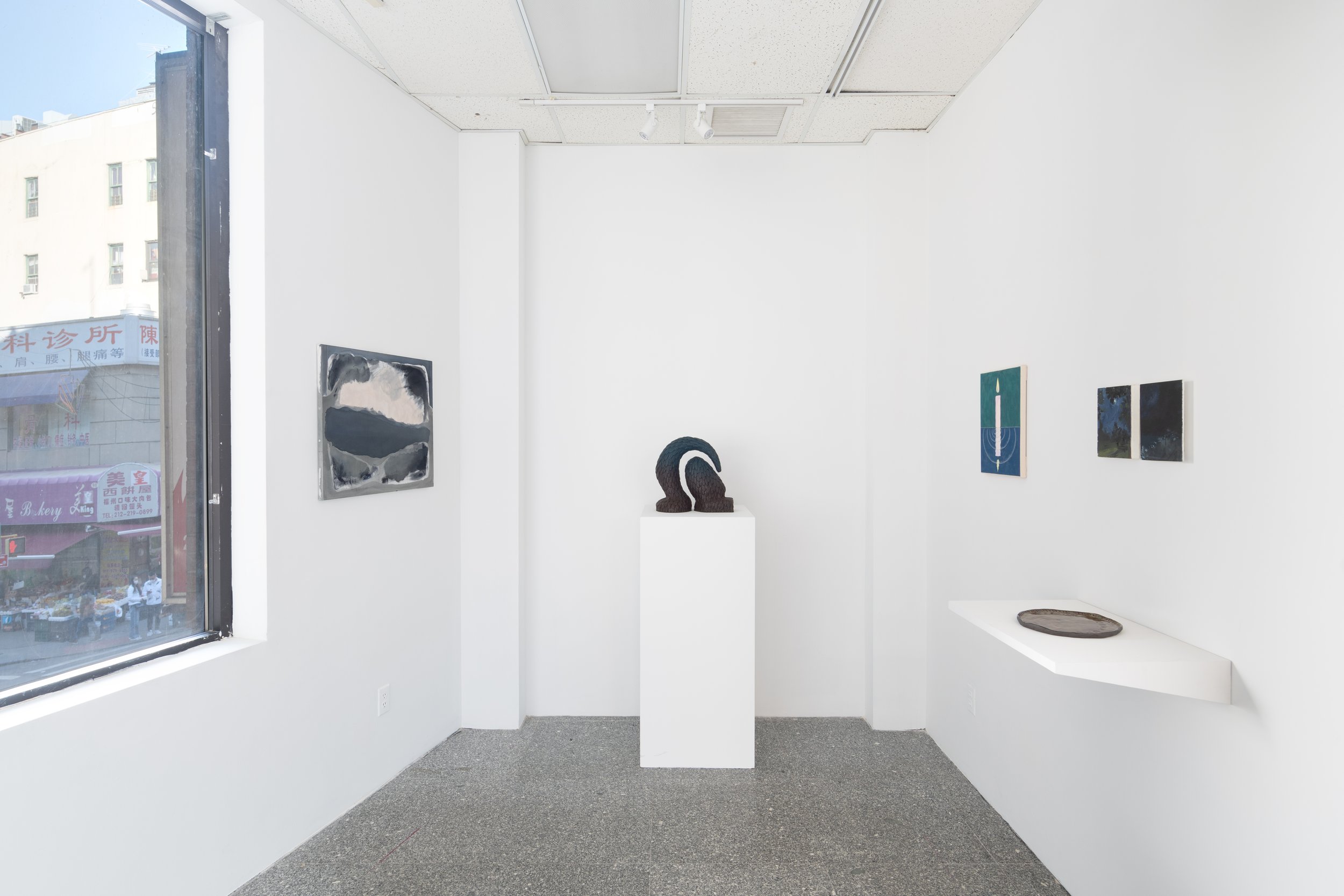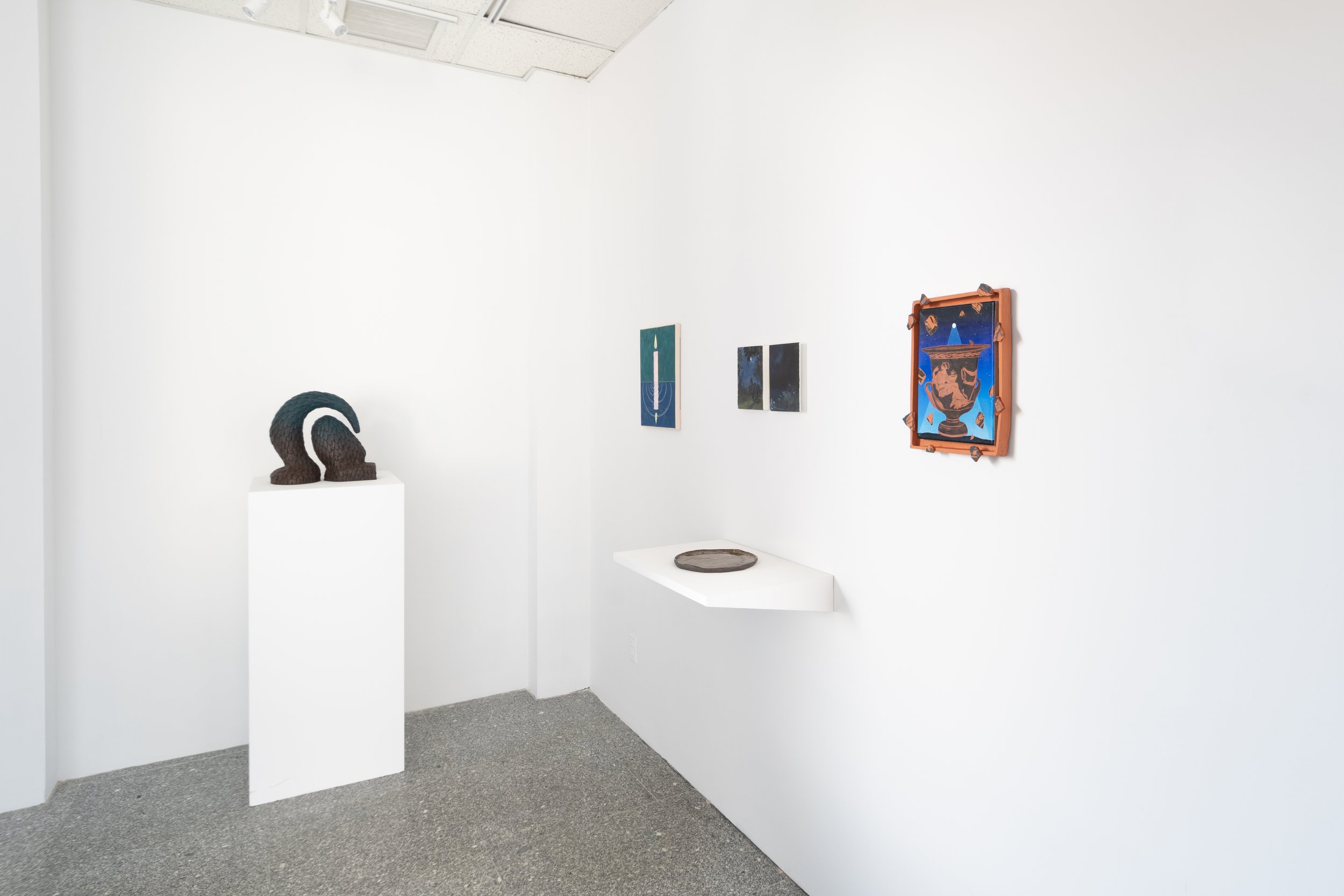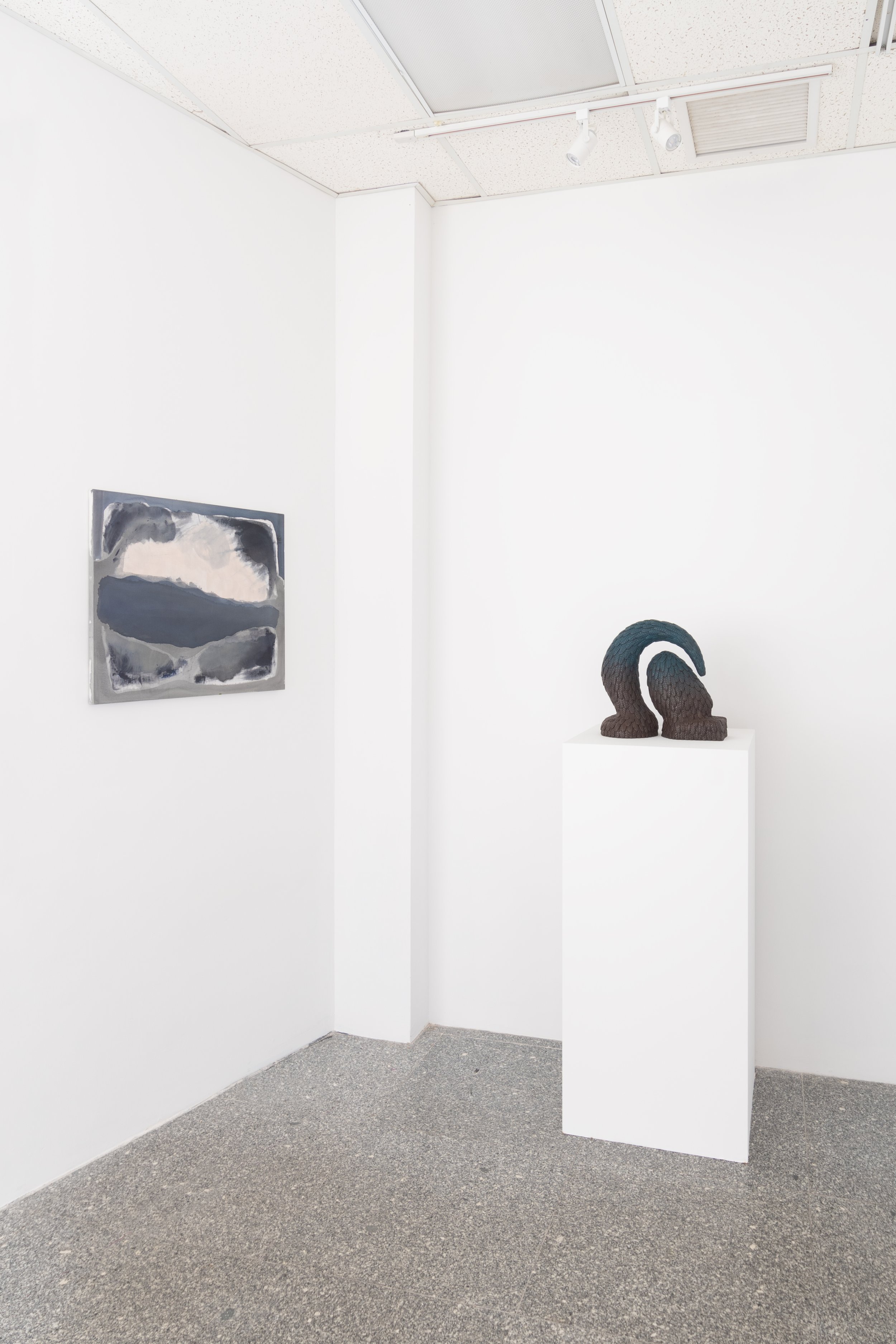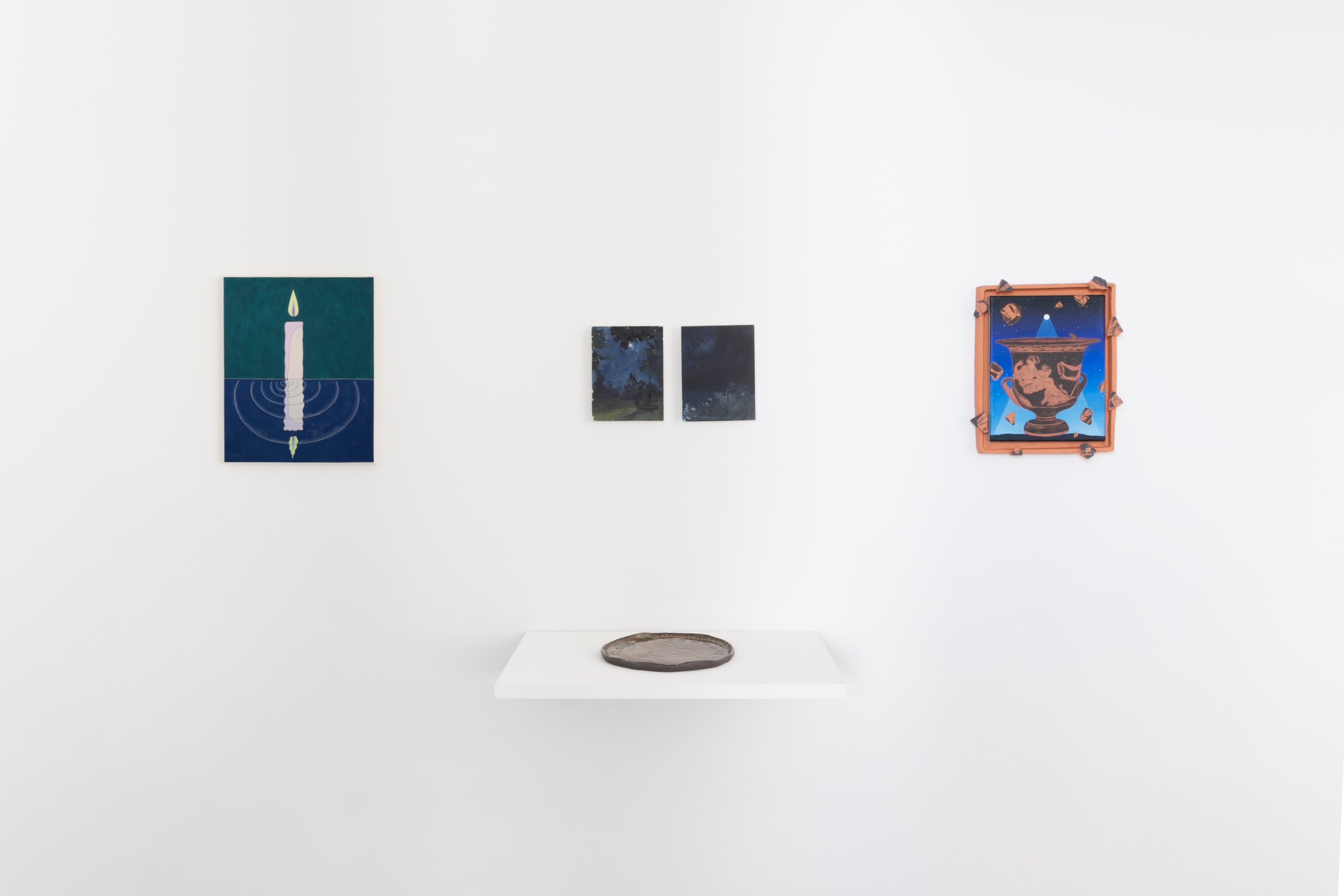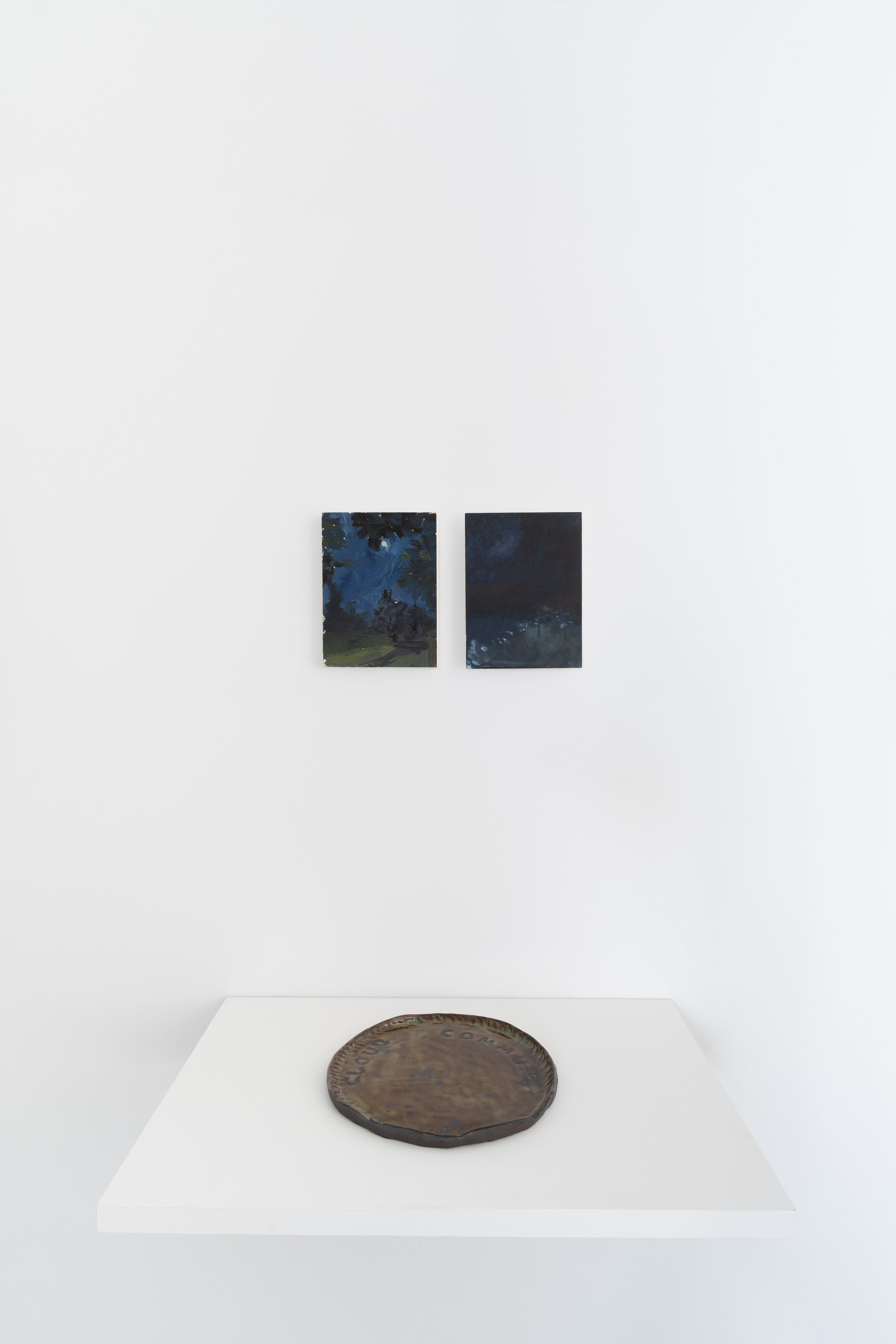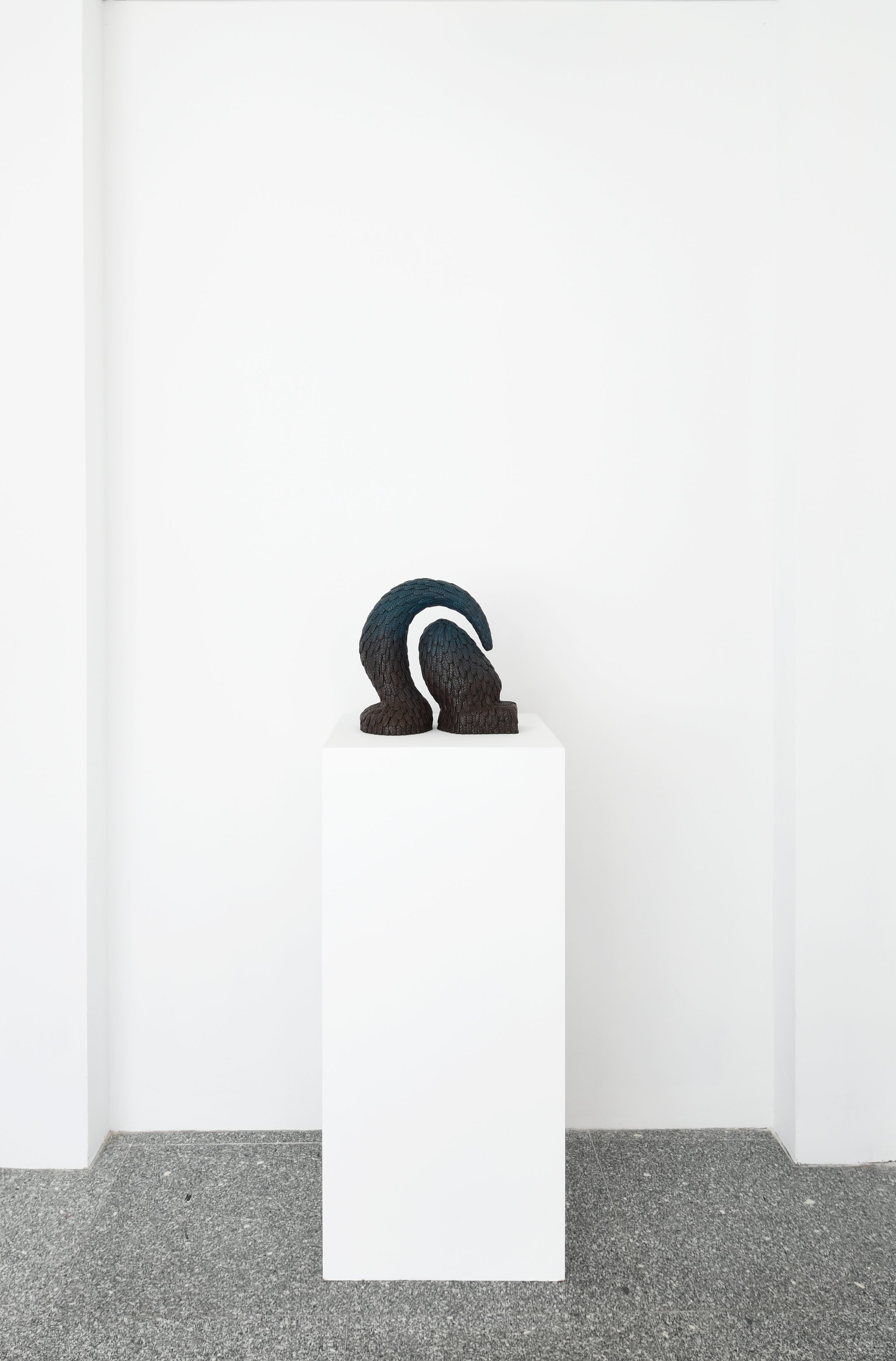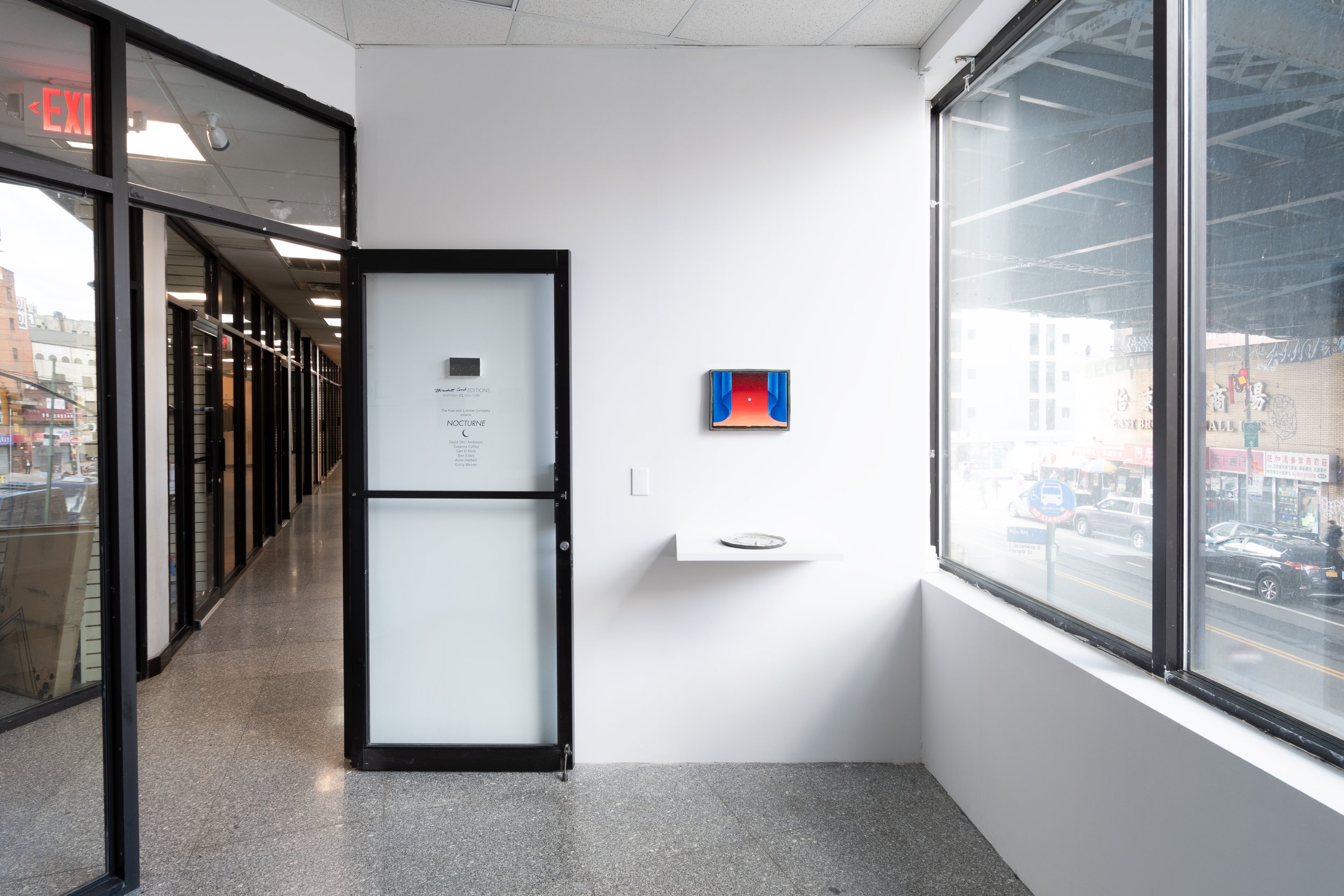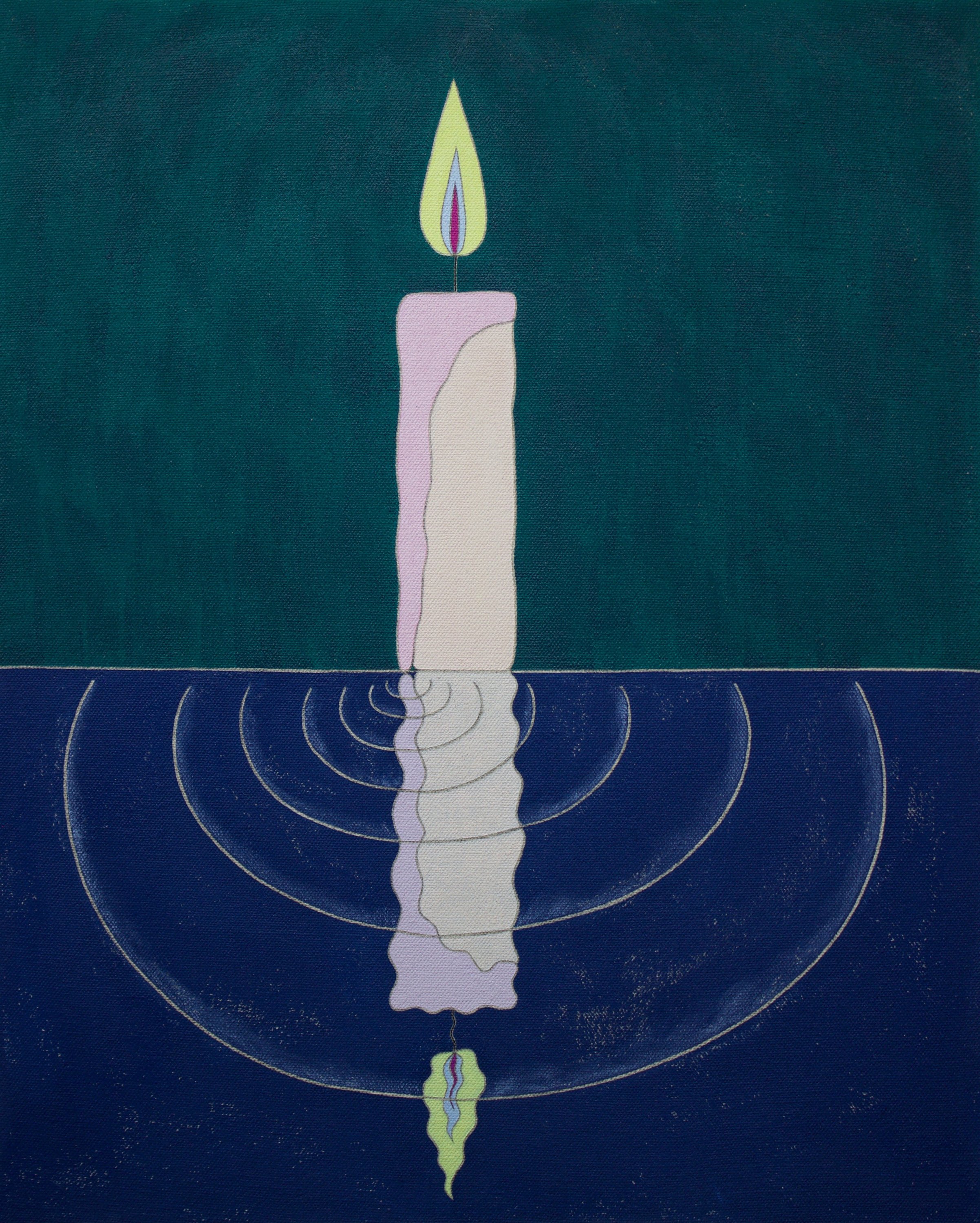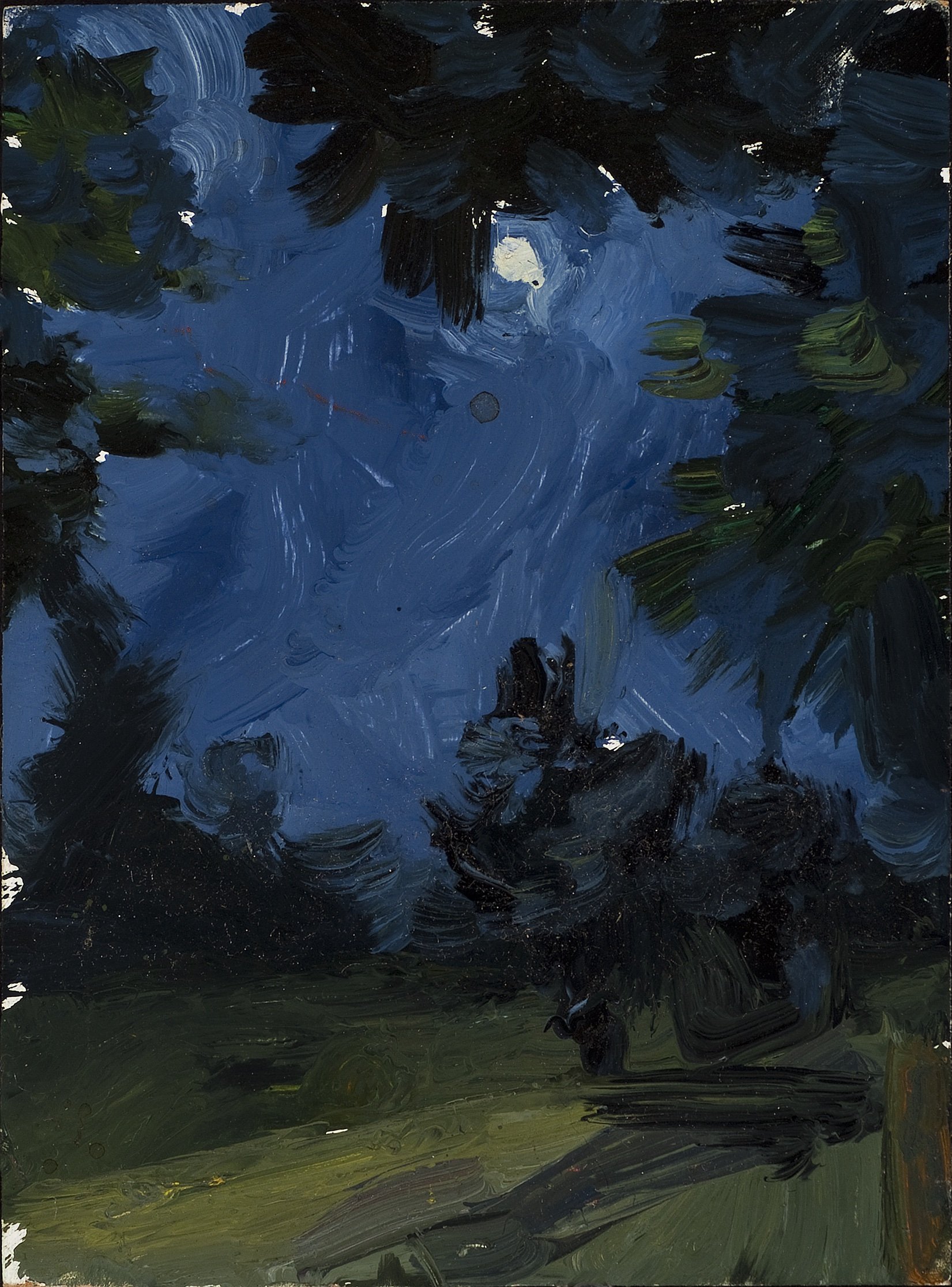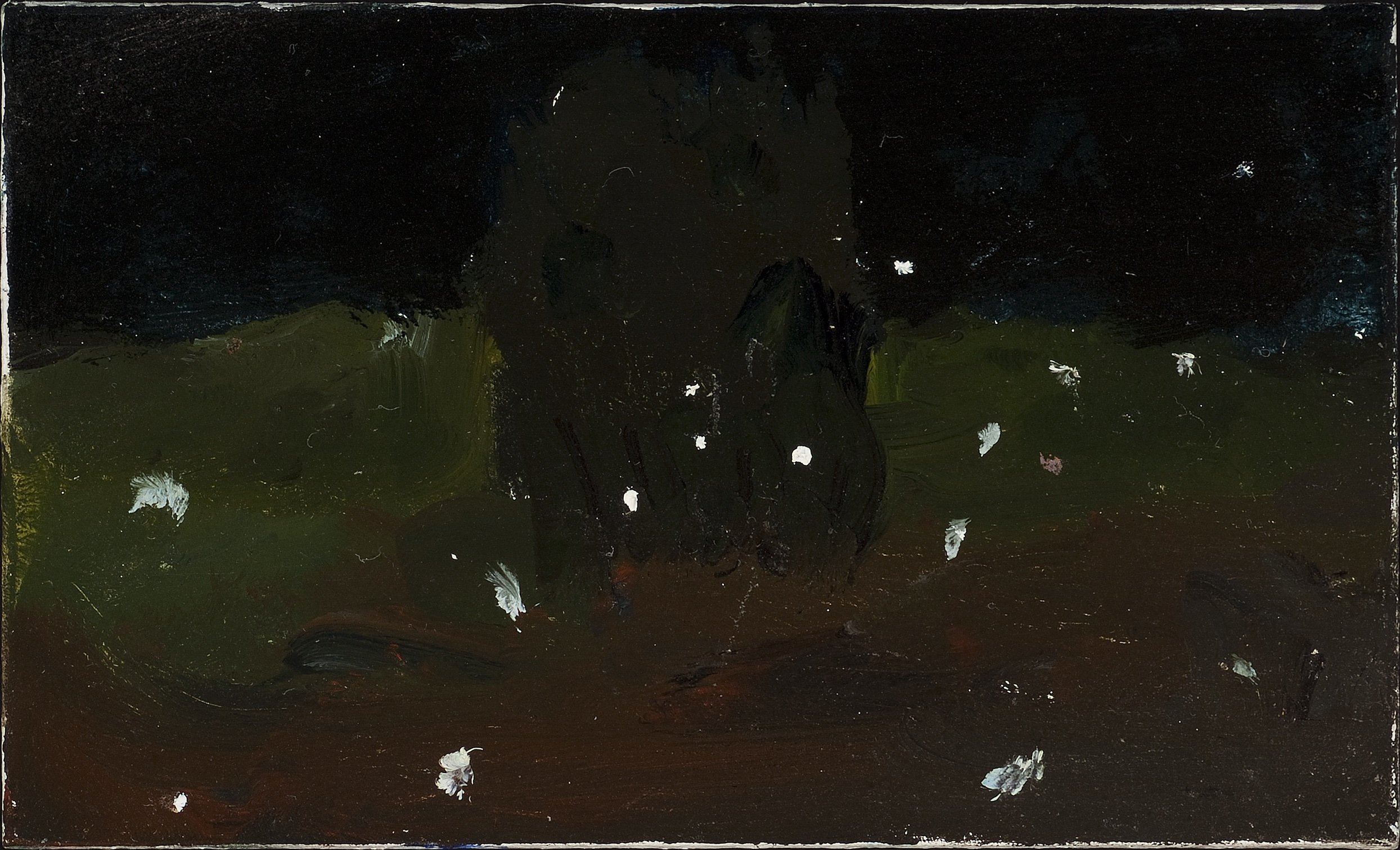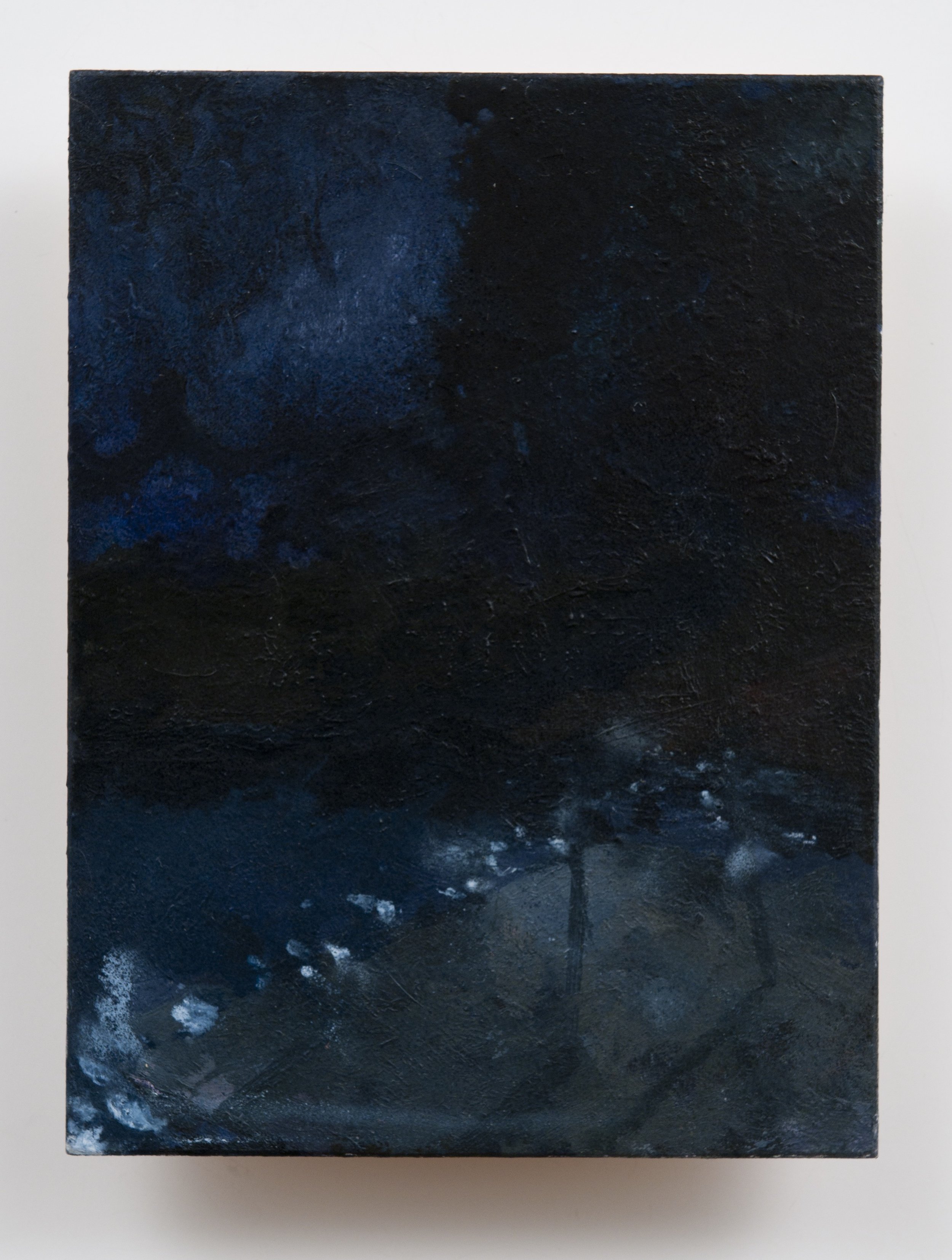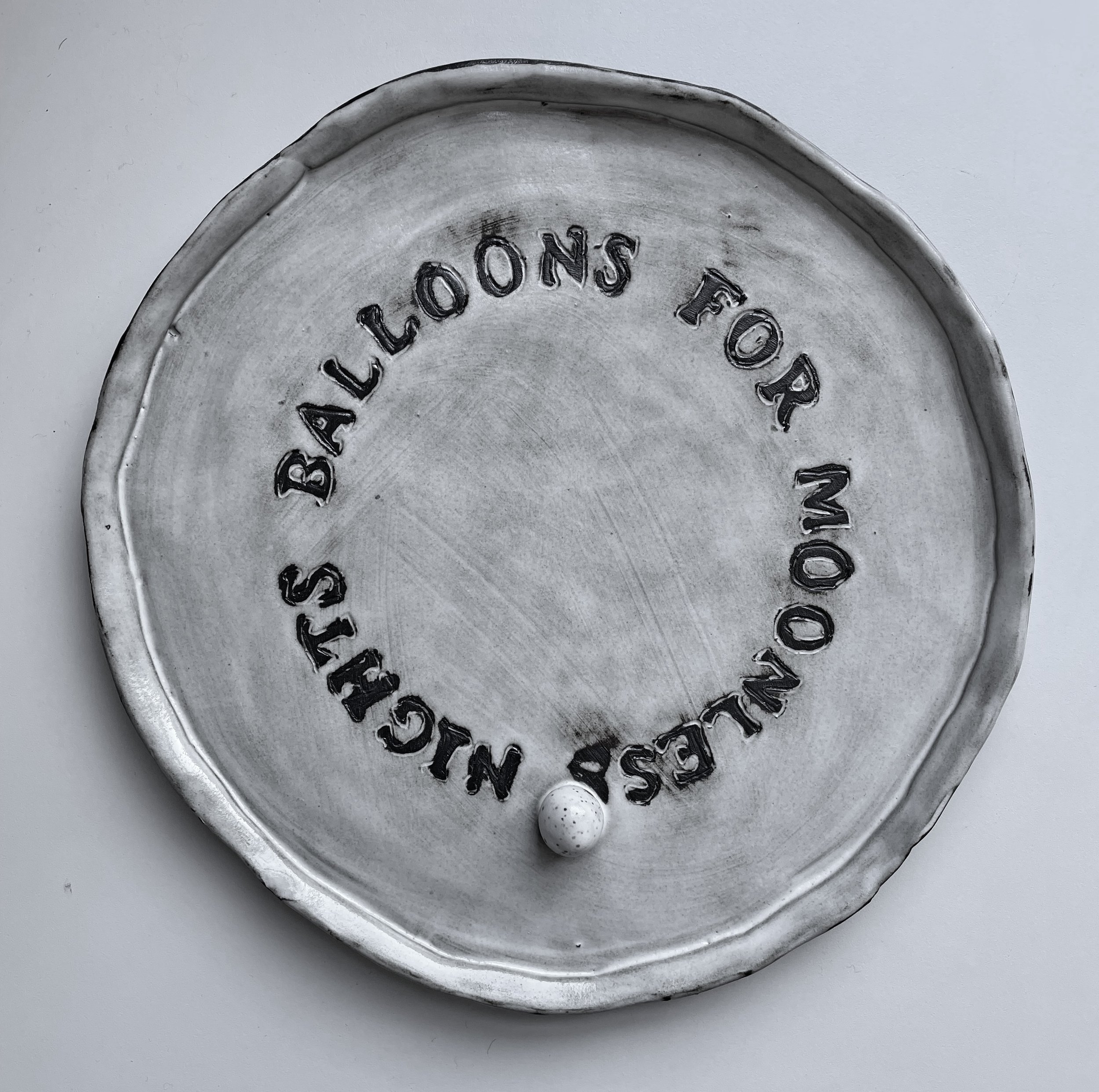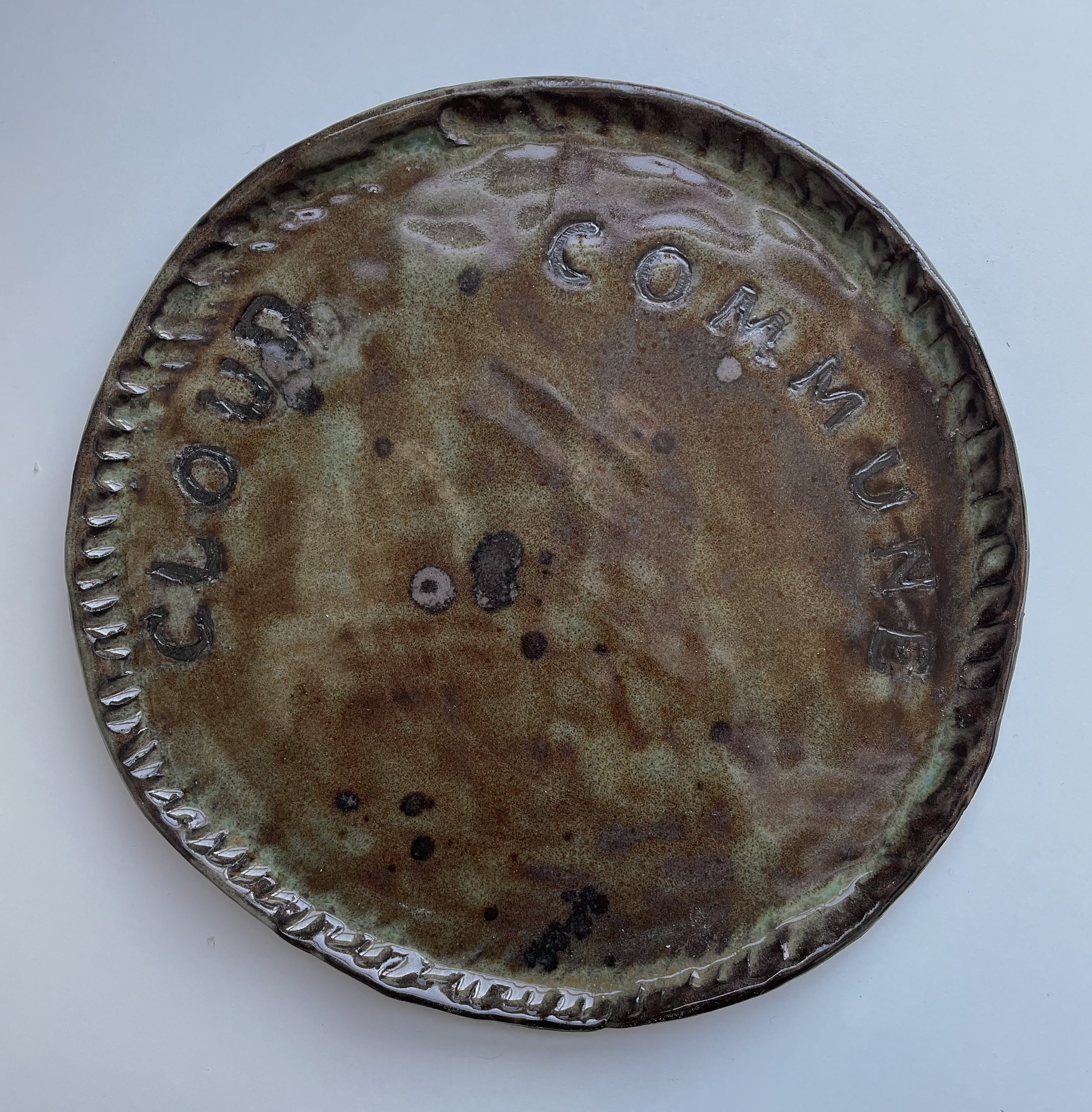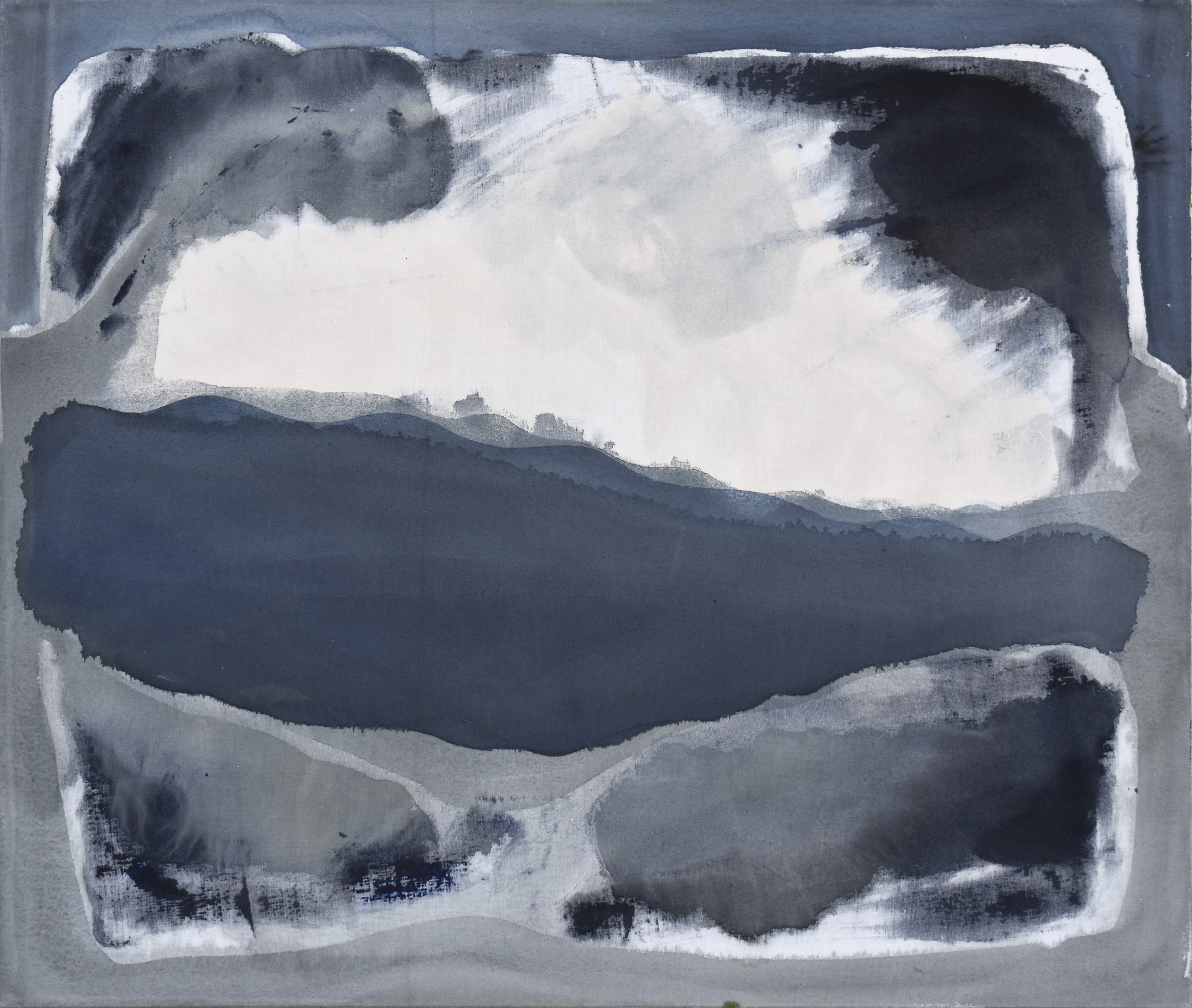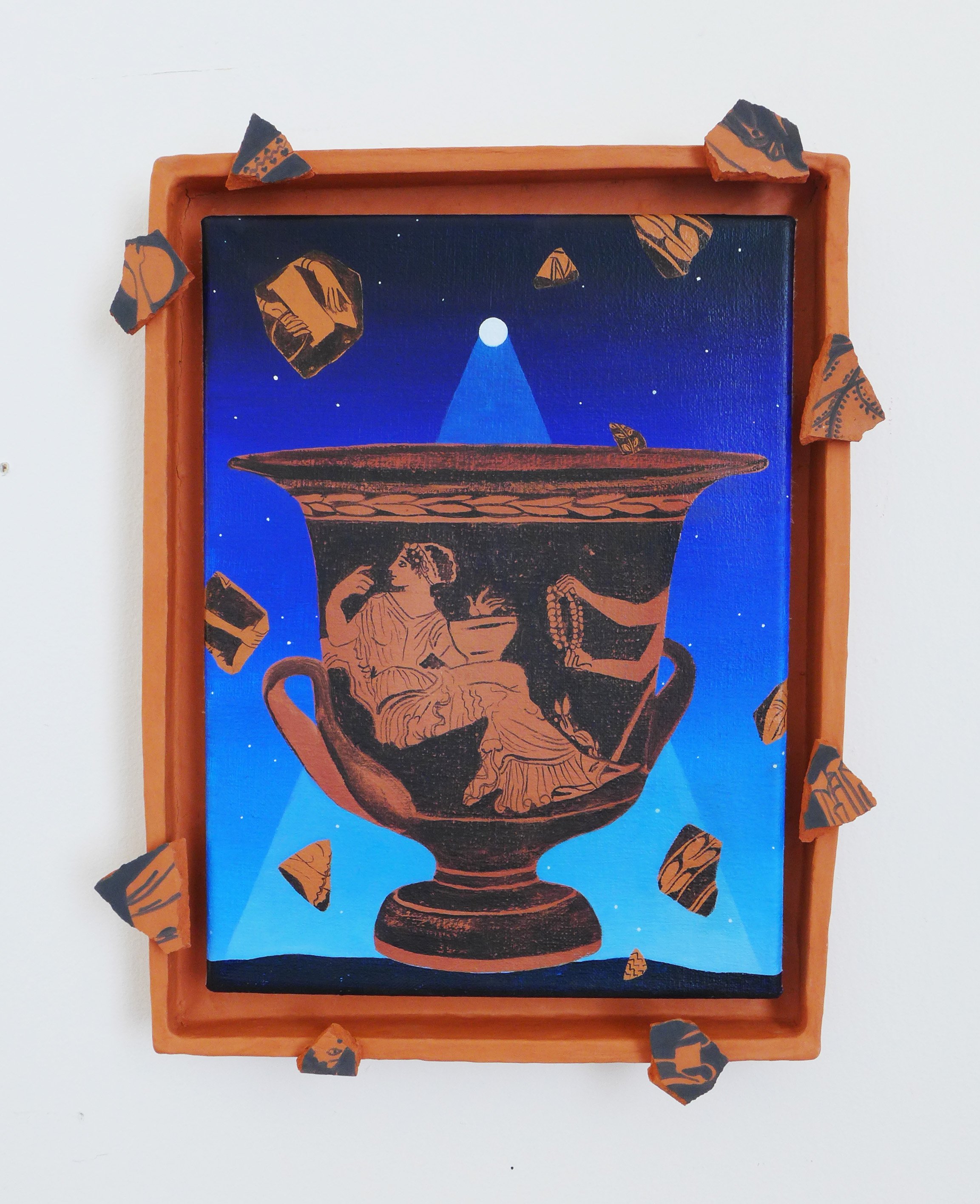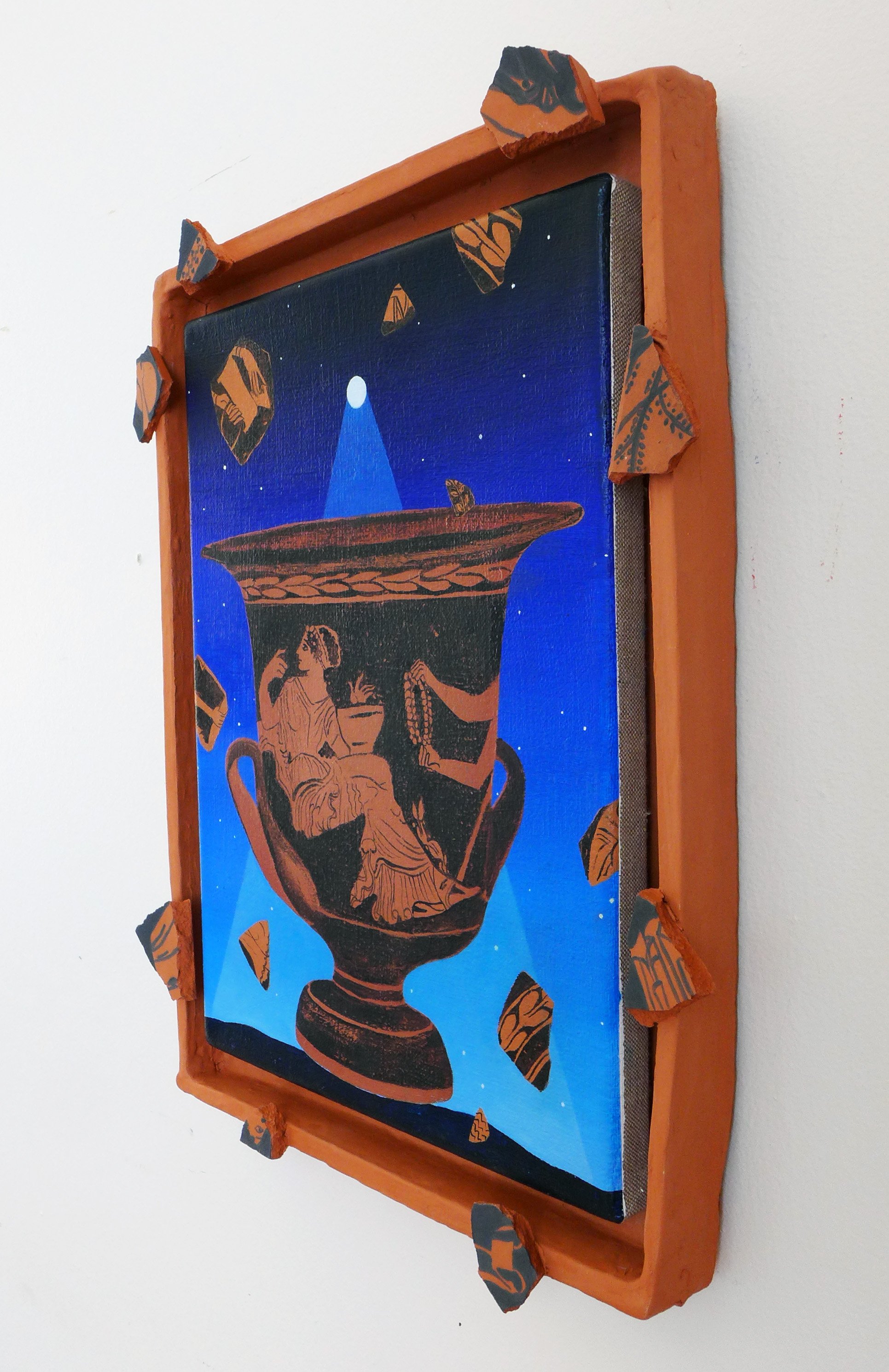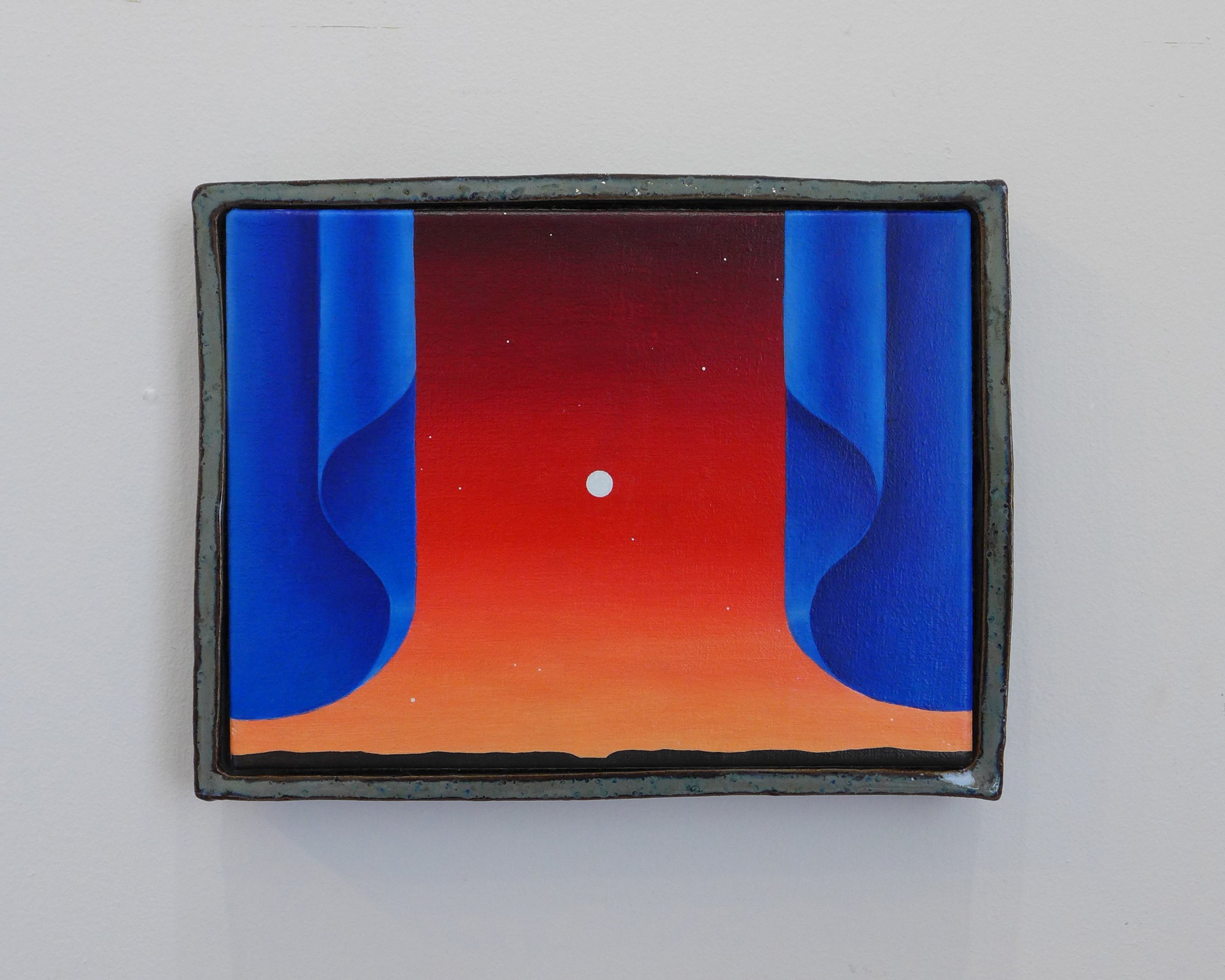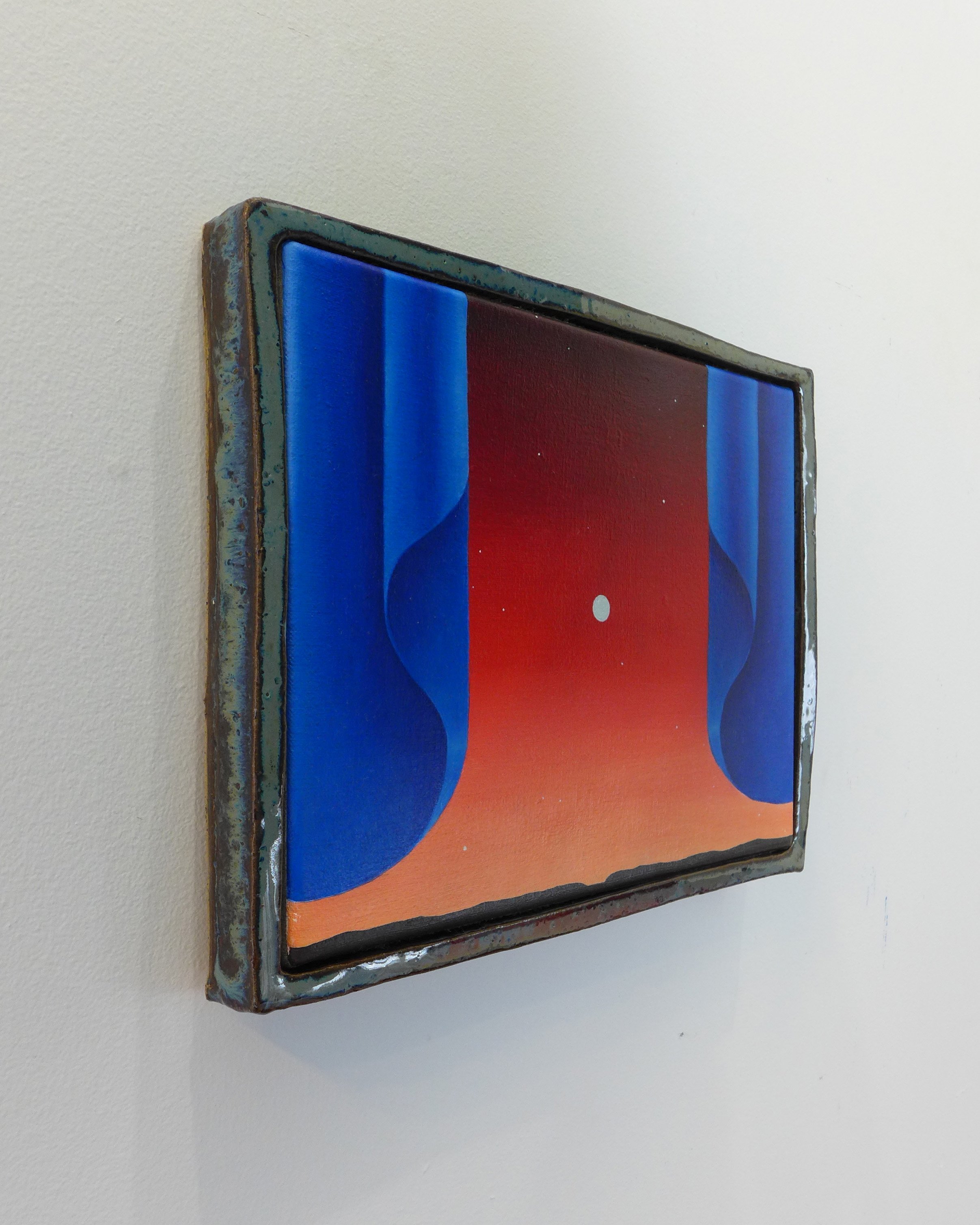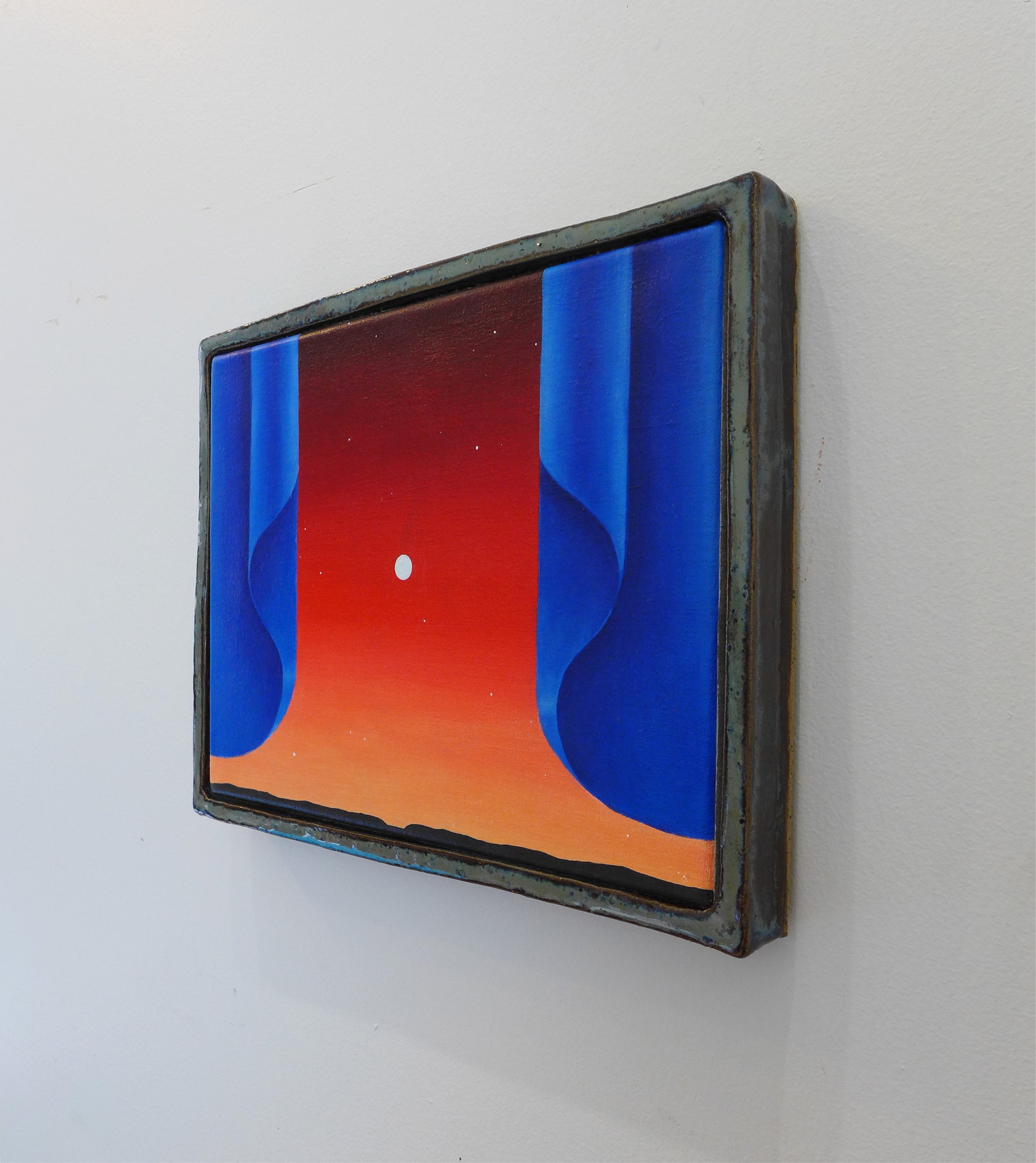Emily Weiner, Reveal, 2022, Oil on linen in stoneware frame, 10 x 13 inches
NOCTURNE
Brackett Creek Editions
March 26-April 23, 2022
opening reception March 26th, 4-7pm
BCE NYC
75 E. Broadway
Units 209 & 210
New York, New York
10002
Participating Artists:
David Onri Anderson is a Tennessee-born French-Algerian Jewish artist, musician, and curator. He graduated from Watkins College of Art in Nashville with the Anny Gowa Purchase Award in 2016. He has had solo exhibitions at Patrick Painter Gallery in Los Angeles, CA, Blaa Galleri Copenhagen, DK (upcoming), Harpy Gallery in Rutherford, NJ, David Lusk Gallery in Nashville, TN, Atlanta Contemporary, amongst others. In 2020 he published a book of drawings with Zürich-based artist book company, Nieves. His work has been reviewed, exhibited and collected internationally with works in permanent collections including the Soho House in Los Angeles, CA and Nashville, TN, The Joseph Hotel, and the Metro Arts Library in Nashville, TN, amongst others. Anderson is founder and curator of an artist-run space called Electric Shed Gallery in Nashville, TN (2018-present). His work has been reviewed in Art in America, Artnet, BURNAWAY, DailyLazy and more.
Susanna Coffey’s artwork has been exhibited in many museums including The Weatherspoon Art Museum, The Aldrich Museum, The Hood Museum, The American Academy of Arts and Letters. Her work is in the collections of The Yale University Art Gallery, The Art Institute of Chicago, The Minneapolis Museum of Art, The National Portrait Gallery, Washington D.C., The Karamay Museum of Art, Xinjiang China and Museum of Contemporary Art, Seville, Spain, among others. Among her awards are The John Simon Guggenheim Memorial Foundation Fellowship, and the Louis Comfort Tiffany Award. Susanna Coffey lives and works in New York City.
Susanna Coffey’s work is represented by Steven Harvey Fine Arts Projects in New York City, Alpha Gallery in Boston and Galeria Isabel Ignacio in Seville, Spain.
Carl D’Alvia received a B.F.A. from the Rhode Island School of Design in 1987 and splits his time between Connecticut and New York City. He works in a sculptural idiom that is decidedly hyper-visual, artisanal and history laden. He has developed proprietary sculptural processes that co-opt existing means of traditional and industrial production. Drawing on sources that include megalithic monuments, toy design and the Baroque, the work encapsulates seemingly antithetical motifs such as minimal/ornate, industrial/handmade, comic/tragic, progress/destruction and attraction/repulsion.
He has had recent solo shows at Hesse Flatow, Nathalie Karg Gallery and Regina Rex in New York and Galerie Papillon in Paris as well as previous solo shows at Mulherin + Pollard ( 2013) and Derek Eller Gallery, New York (2008 & 2006) . His work has appeared in group exhibitions at numerous galleries including: Helena Anrather, Regina Rex, Mother Gallery, The Journal Gallery (2016), Gering & Lopez (2007), The Yerba Buena Art Center (2006), Feature Inc. (2004), and White columns(2000).
His work has been reviewed in Artforum, Flash Art, The New York Times, Hyperallergic, The Boston Globe, Time Out and the Village Voice. He also taught sculpture at the School of the Museum of Fine Arts in Boston and served as a guest lecturer and critic at the Rome Programs of the Rhode Island School of Design, Cornell, and Temple University. He was awarded the Rome Prize for Visual Arts for 2012-2013 from the American Academy in Rome.
Ben Estes lives in Kingston, NY and is the author of two books of poetry, ABC Moonlight and Illustrated Games of Patience. He has also edited the books Together and Alone: the Photographs of Karlheinz Weinberger and On the Mesa: An Anthology of Bolinas Writing. With Alan Felsenthal he runs the small publishing company The Song Cave. This fall Ben will show a new group of paintings at Headstone Gallery, in the Hudson Valley.
Anne Herbert is a painter and educator living in Birmingham, Alabama, with her husband and daughter. Anne received her BFA in Painting from the University of Montevallo in 2007, and her MFA from the University of Alabama in 2013. Anne teaches in the Visual Art Department at the Alabama School of Fine Arts where she also serves as director for the Vulcan Materials Gallery. Anne maintains a vibrant studio practice and exhibits regularly throughout the southeast. Recent activities include a solo exhibition at Ground Floor Contemporary in Birmingham, a summer 2021 residency at Stove Works in Chattanooga, TN, inclusion in the Artist/Mother group exhibition Painting at Night in 2020, and First Place Prize in the 2019 SECAC Juried Exhibition.
Emily Weiner (b. Brooklyn, 1981) is a painter living and working in Nashville, TN. Combining ceramics and oil painting, her works configure icons, geometries, and material motifs which recur over time. She is interested in the ways in which symbols move between the collective unconscious and individual perception. Weiner received her BA from Barnard College, Columbia University (2003) and her MFA in Fine Arts at the School of Visual Arts (2011). Past exhibitions of her paintings include: Whitespace Gallery (Atlanta, GA); David Lusk Gallery (Nashville, TN); Red Arrow Gallery (Nashville, TN); Gerdarsafn Museum (Kopavogur, Iceland); LeRoy Neiman Gallery, Columbia University (New York); CULT (San Francisco); Soloway (Brooklyn), and Grizzly Grizzly (Philadelphia). She has been a Visiting Artist at the American Academy in Rome (2015); residency co-leader at Watershed Center for the Ceramic Arts, Newcastle, Maine (2018); Artist Teacher-Resident at The Cooper Union, New York, NY (2014); artist-in-residence at The Banff Centre, Canada (2012); and resident at Camac Art Center in France (2011). Her work was featured in New American Paintings in 2020.
In my paintings, I have been combining symbols from the past and present, to connect visual threads that run from ancient craft traditions to the archetypes currently and perennially observed in theater, mythologies and dreams. My work considers symbolic imagery through a feminist lens; It opposes the idea of progress as a straight arrow, but rather proposes a winding timeline toward a common visual language that overlaps, loops, omits, dematerializes, and rematerializes.
These paintings—oil on linen, set in ceramic frames—rely on intuition, image research, synchronicity, time, and layers of paint. They question how images and stories are shaped, shared, and translated across generations and disparate locations. They question: What are the narratives that dominate personal and collective stories, and how are those stories reinforced? How can symbolic language be reframed, both literally and figuratively, to transcend the stories we may have been told?
